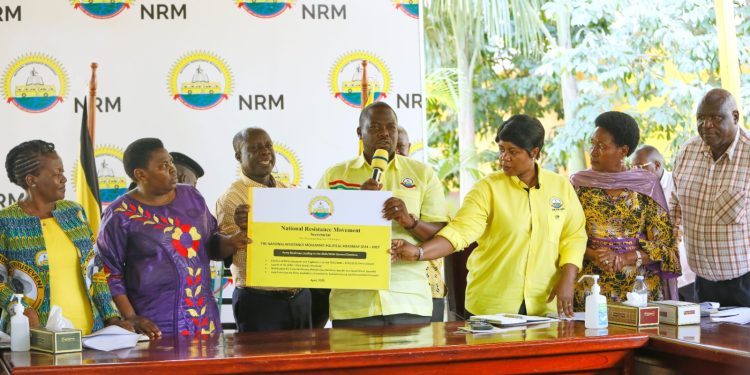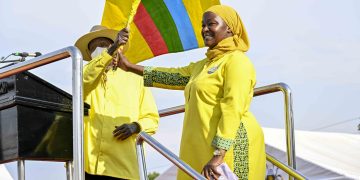The ruling National Resistance Movement (NRM) has taken a strategic lead in Uganda’s electoral process with the launch of its comprehensive roadmap for the 2025/2026 general elections.
This announcement positions the party at the forefront of political mobilization as it prepares to engage its expansive grassroots network
The roadmap was officially unveiled on Tuesday, March 15, by the NRM Secretary-General, Rt. Hon. Richard Todwong, during a press briefing held at the party’s national secretariat.
Accompanied by senior members of the party leadership, Todwong introduced the schedule that outlines key internal processes stretching from April 2025 to February 2026.
The roadmap is anchored in the NRM’s ideological framework Patriotism, Pan-Africanism, Socio-Economic Transformation, and Democracy principles that continue to shape the party’s strategic vision.
“This is a very important milestone for our party. We call upon all party members and stakeholders to take keen interest and observe the dates proposed for each activity,” Todwong emphasized.
He further highlighted the robust scale of the party’s organizational base, revealing that NRM currently commands a registered membership of 20.7 million approximately 40% of Uganda’s total population.
Of these, 10.8 million are female, 9.8 million are male, and 7.4 million are categorized as youth. The party also includes 1.7 million elderly members and 458,000 individuals under 18 years of age, with membership eligibility starting at 16
“We have an authentic digitalized members register which we are going to use in our internal party election and for mobilization,” Todwong noted. “We have 20.7 million members of the party and over 19.8 million registered party voters.”
The roadmap sets out a precise electoral calendar beginning with the expression of interest and nomination of LC1 chairpersons and village party officials on April 24, 2025. This will be succeeded by the election of LC1 flag bearers on May 6, 2025.
The internal primaries for parliamentary seats are scheduled for July 16, 2025, followed by primaries for LCV chairpersons, mayors, and councilors on July 24, 2025. Elections for LCIII chairpersons and councilors will take place on August 18, 2025.
The nomination of presidential candidates is slated for October 2–3, 2025, culminating in a national polling period running from January 12 to February 9, 2026. During this time, Ugandans will elect the President, Members of Parliament, and leaders at various levels of local government.
In addition to the highlighted dates, the roadmap incorporates timelines for critical party functions such as delegate conferences, the nomination of candidates by the Electoral Commission, and officially sanctioned campaign periods.
By launching its roadmap early, the NRM not only demonstrates organizational preparedness but also sets a precedent for other political formations.
As Uganda moves steadily toward the next electoral cycle, the NRM’s proactive approach reinforces its intent to maintain dominance in the political landscape through structured engagement, mass mobilization, and disciplined electoral management.

















